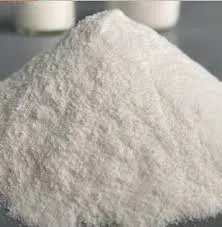
Oct . 02, 2024 18:55 Back to list
Understanding HPMC Grades and Their Applications in Pharmaceuticals and Food Industries
Understanding HPMC Grades A Comprehensive Overview
Hydroxypropyl Methylcellulose (HPMC) is a semi-synthetic polymer commonly employed in various industries, particularly in pharmaceuticals, food, and construction. It is derived from cellulose, a natural polymer found in plant cell walls, and modified to enhance its properties. HPMC grades differ in terms of viscosity, substitution levels, and other chemical characteristics, making them tailored for specific applications. In this article, we will explore the different HPMC grades, their properties, and the myriad of applications they serve.
What is HPMC?
HPMC is a non-ionic cellulose ether that possesses unique properties, such as thickening, emulsifying, and film-forming abilities. These characteristics make HPMC a versatile ingredient in many formulations. The modification of cellulose to create HPMC allows for enhanced solubility in cold water and improved stability in various environmental conditions.
Different HPMC Grades
HPMC is available in various grades, each with distinct properties. The primary distinguishing factors among these grades include
1. Viscosity HPMC grades can be classified based on their viscosity levels, which are usually measured at a specific concentration in water. Low viscosity grades are more fluid, providing thinner mixtures, while high viscosity grades create thicker solutions. This attribute is crucial when formulating gels, pastes, or emulsions.
2. Substitution level HPMC consists of hydroxyl, methoxy, and hydroxypropyl groups, with the substitution level indicating the proportion of these groups. Different substitution levels affect solubility and gelation properties. For instance, a higher hydroxypropyl content often results in improved thermal stability and enhanced performance in high-temperature applications.
3. Solubility HPMC is primarily soluble in cold water, though the solubility can vary greatly among different grades. Some grades may dissolve more readily than others, affecting their usability in specific formulations.
hpmc grades

4. Particle size The size of the HPMC particles can influence the end product's texture, appearance, and mechanism of action. Fine grades may lead to smoother formulations, while coarser grades could provide different physical characteristics.
Applications of HPMC Grades
The diverse properties of HPMC allow it to find applications across multiple fields
1. Pharmaceuticals HPMC is extensively used in the pharmaceutical industry for drug formulation. It serves as a binder in tablet formulations, a thickening agent in gels, and a coating material for controlled-release capsules. Its ability to form a gel-like substance helps modify the release kinetics of drugs, ensuring a sustained therapeutic action.
2. Food Industry In the food sector, HPMC acts as a thickening agent, emulsifier, and stabilizer. It is commonly found in sauces, dressings, and baked goods, where it improves texture and shelf life. Its status as a non-toxic additive makes it a popular choice for various food formulations.
3. Construction and Building Materials HPMC plays a significant role in the construction industry. It is used as a thickener and water-retaining agent in cement and gypsum formulations, enhancing workability and improving bonding properties. HPMC's ability to retain water also helps prevent cracking in the final product.
4. Cosmetics and Personal Care In cosmetics, HPMC serves as a thickening agent in creams and lotions, providing a desirable texture and feel. It also acts as a film-forming agent in products like mascara and hair gels, enhancing adhesion and wearability.
Conclusion
HPMC grades represent a vital component in numerous industries due to their unique properties and functionalities. Understanding the distinctions among these grades is crucial for formulators aiming to optimize product performance. As technology advances and the demand for innovative formulations grows, the role of HPMC is likely to expand even further, breaking new ground in various applications and methodologies. Whether in pharmaceuticals, food, construction, or personal care, HPMC remains a reliable ingredient, providing solutions to meet modern needs.
-
The Widespread Application of Redispersible Powder in Construction and Building Materials
NewsMay.16,2025
-
The Widespread Application of Hpmc in the Detergent Industry
NewsMay.16,2025
-
The Main Applications of Hydroxyethyl Cellulose in Paints and Coatings
NewsMay.16,2025
-
Mortar Bonding Agent: the Key to Enhancing the Adhesion Between New and Old Mortar Layers and Between Mortar and Different Substrates
NewsMay.16,2025
-
HPMC: Application as a thickener and excipient
NewsMay.16,2025
-
Hec Cellulose Cellulose: Multi functional dispersants and high-efficiency thickeners
NewsMay.16,2025







